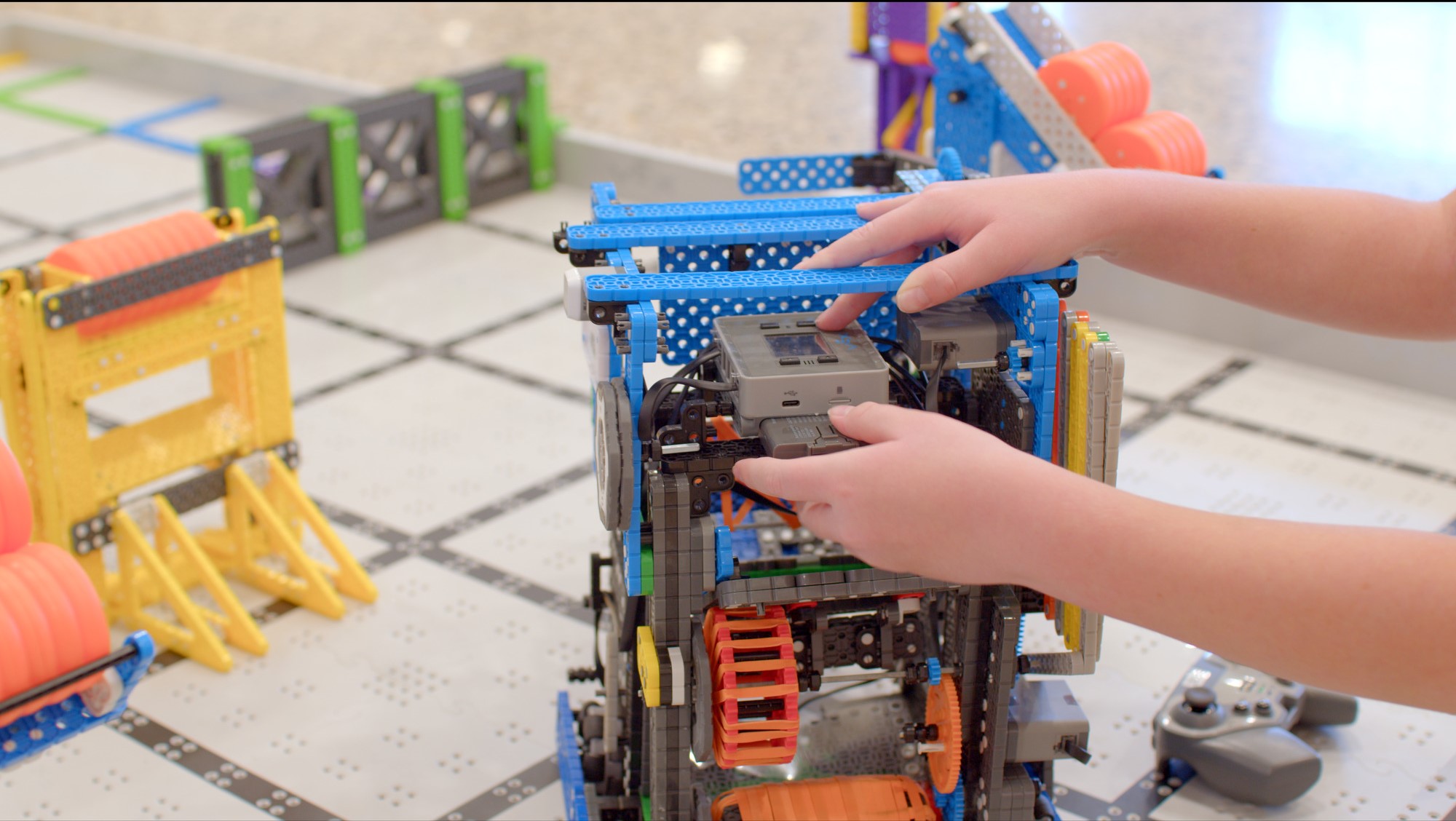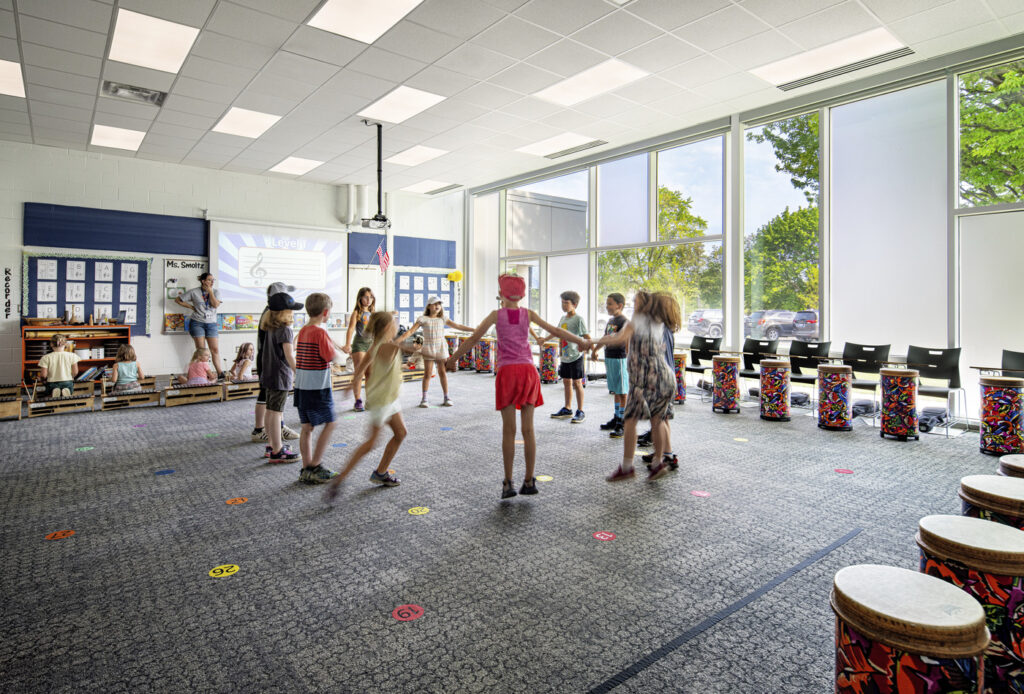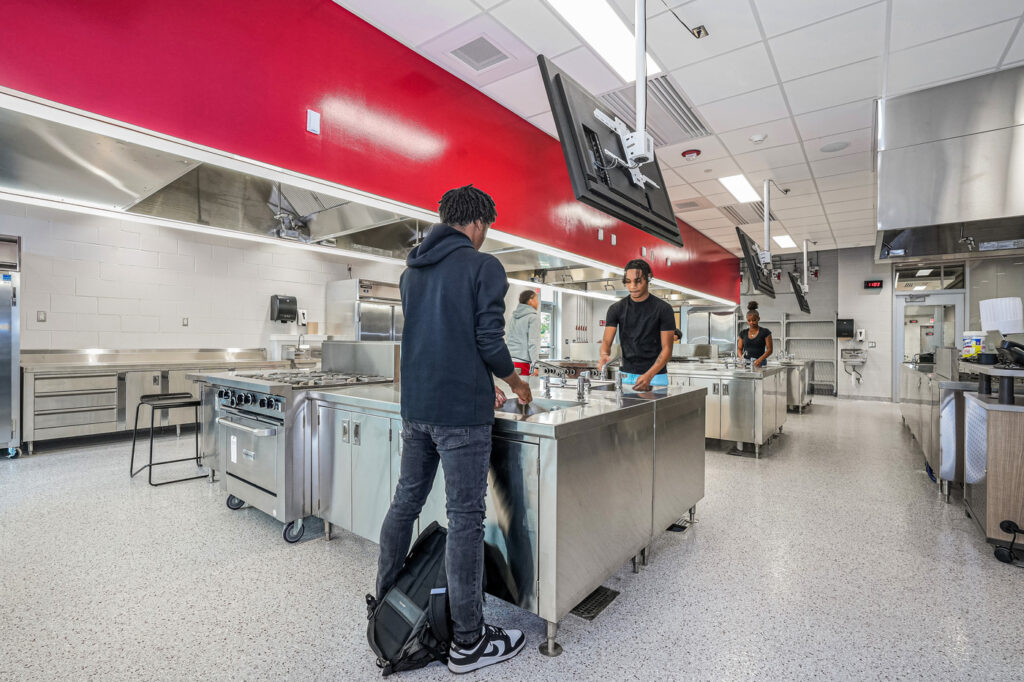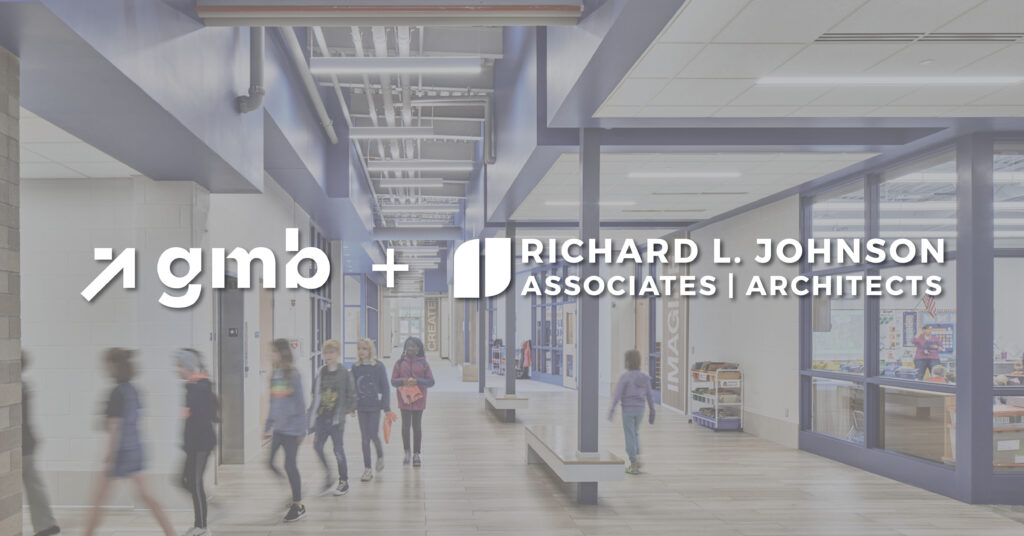Increased accessibility to technology has made robotics a new staple in public education, engaging students of all ages. In facilities that are designed specifically to support robotics education, students can experience an innovative environment that prepares them for future careers.
In the early 2000s, transitions in STEM curriculum created opportunities for robotics programs to grow in K-12 settings. While robotics education used to be out of reach for many public schools due to cost and lack of teacher availability, it is now becoming more affordable through corporate sponsorships, repurposing of equipment, and increased access to resources.
Today’s students have never known a world without internet access and education that supports future career paths in technology is essential. Robotics are a considerable tool in many of today’s industries and early interaction with robotics is encouraged. Students in robotics can learn the ins and outs of in-demand skills like engineering, coding, manufacturing and more. Connecting robotics principles to overall academics gives students the opportunity to apply their knowledge in real-world applications and fosters a love for lifelong learning. Beyond technical skills, robotics teaches students critical thinking skills, teamwork, and leadership while also building their confidence.
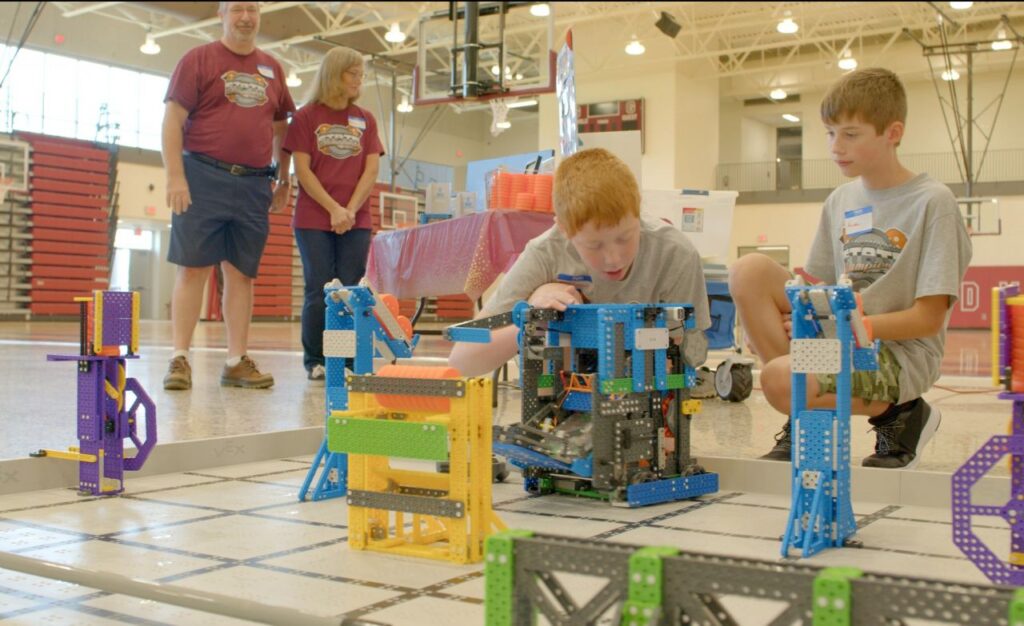
Design Considerations for Robotics
Young minds have a natural curiosity for how things work, and robotics keenly nurtures that interest. Having a well-defined and purposeful space to practice robotics skills helps set students up for success. Top design considerations for robotics-focused spaces include:
Integrated Technology
- Access to the internet, lighting, digital displays, audio systems, and ample power supply for fabrication is essential.
Collaborative Learning Areas
- Students need designated space to work together to problem solve, unlock creativity, and improve their robots and programs.
Flexibility and Mobility
- Incorporate flexibility for different types of competition, spectator seating and event concessions, and a variety of learning areas. Also planning for alternate uses of the large spaces when robotics programming is not active.
Durability of Spaces
- Address the needs for durable and non-static flooring, proper separation between robotics activities, unrestricted fabrication areas, and storage for materials.
Schools need to be agile with their spaces and programs to anticipate the needs of future students, evolving technology, and diverse learning styles. GMB has worked with multiple school districts on their robotics programming spaces that inspire students, from classroom renovations to large-scale arenas.
Mason Public Schools – Tractor Nation
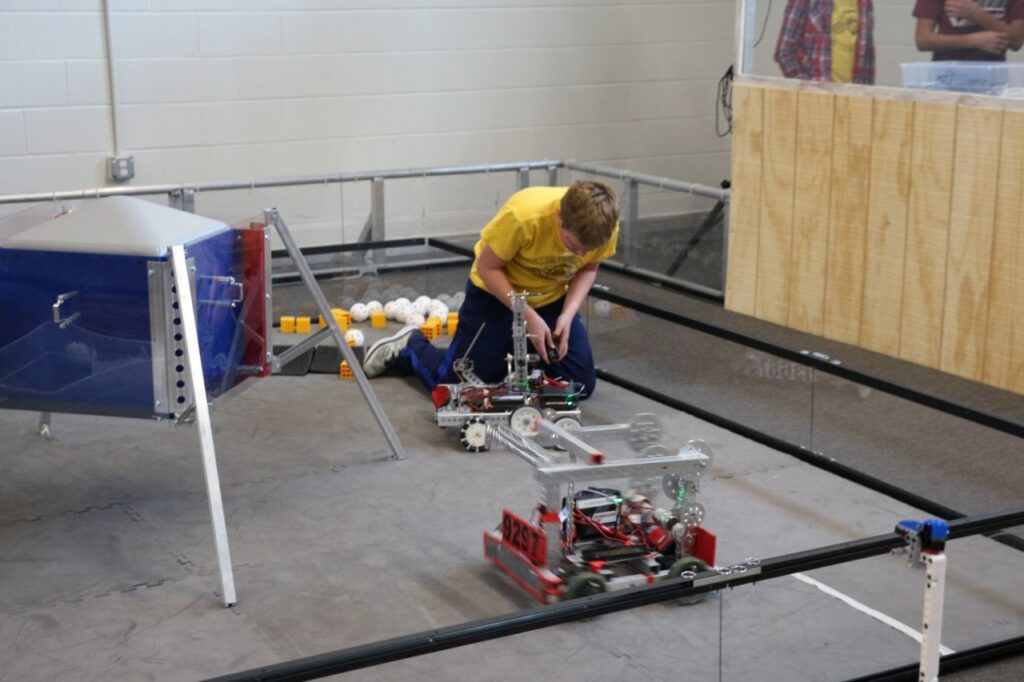
Mason Public Schools continues to enhance their robotics program, dubbed Tractor Nation, at all ages throughout the district. To meet the growing demand, a new robotics competition space was proposed and supported through the district’s bond and sinking fund. The completed space, housed within the high school, has become a state-of-the-art area for students to learn, create, and compete. The robotics center features a new fabrication workshop, a full-size practice FIRST Robotics field, and adjoining classroom. The center also supports programs for other local schools to practice, collaborate, and learn from each other.
Mason Public Schools has successfully integrated robotics curriculum at the middle school and high school levels within their district. The middle school robotics class introduces students to VEX IQ coding and building, while the high school classes include Introduction to Robotics, Competitive Robotics, and 3D Printing classes. Introducing these concepts into the curriculum helps connect student’s academic knowledge in engineering, mathematics, and science, while also spreading awareness of robotics education.
“This is real-world application,” explained Ben Shoemaker, the Lead Mentor for Team 3655, to WILX News 10 at the facility’s ribbon cutting. “We’re teaching kids how to run equipment, we’re teaching kids how to build things…the robot is a vehicle for us to teach kids how to problem solve no matter what discipline they’re interested in doing or what their future plans are.”
Grandville Public Schools –Robodawgs
Grandville Public Schools signature extracurricular robotics program consists of the Grandville Robodawgs team for high school age students and the Grandville Robotics that serves 3rd – 8th graders. Their programs have recently finished their first competition season in the newly constructed robotics arena, one of the largest built-for-purpose robotics competition centers in the United States. The robotics arena can host a variety of competitions with up to 2,000 spectators. The venue can be used for FIRST Robotics Competitions (FRC), VEX Robotics, Lego League and even aerial drone robotics with multiple competition fields and pits for up to 120 teams. The polished concrete floors are low maintenance and scratch resistant, the perfect surface for battle bot events. Acoustics in the space were specifically designed to dampen the sounds of robotics use with perforated acoustical roof deck and wall panels. Air flow disseminated from the ductwork controls arena temperature and does not disrupt the sensitive ariel drone competitions. The arena is also supplied with separate electric circuits that will not impact the rest of the school building during high volume electrical usage times.
The adjoining multi-purpose gymnasium space with a traditional wood floor can also be combined to host large tournament events. Adjacent woodshop spaces, mini hardware store, concessions, and multiple load-in points with large rollup doors allow for robot building and practice, 3D printing, storage, and multi-purpose use. The district can control the amount of access to the school’s non-academic spaces for after-hours use, keeping the academics wing secure while still welcoming groups for events or extracurricular activities.
“This is a game changer for all West Michigan robotics and their programs who can use this top-notch facility to build their programs,” said Roger Bearup, Grandville Public Schools Superintendent.


